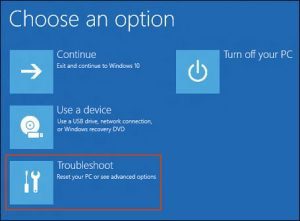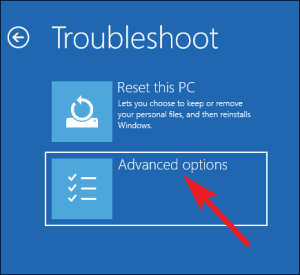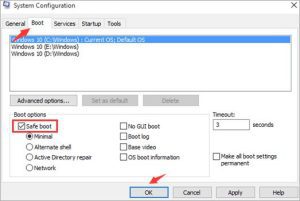Safe mode is just like normal windows you use on your pc. But the differences are seen in graphics, background, and other crucial functions of the computer.
Windows 10 safe mode is the boot option in windows 10 which starts your PC in a limited resource or state with some restrictions. Only the most needed files and drivers for running the operating system are loaded. Graphics drivers are not that important to run the operating system so the low graphics are loaded during windows safe mode, a screen of safe mode looks bleak, and a whole black screen desktop. While you are in safe mode, you will see ‘safe mode’ written on all four sides of your computer screen. Safe mode also doesn’t load any third-party programs which are loaded in a startup during normal mode. Windows safe mode is activated when you need to troubleshoot bugs or errors in your PC unknowing the cause of the error.
Types of Windows 10 Safe mode:
1. Safe mode:
You can load with minimal features like low graphics and generic drivers. The network is also disabled. You can choose this in the case that your pc is not functioning well and you don’t need to connect to the internet or network.
2. Safe mode with networking:
You can load safe mode with minimal features but the network is enabled. You should choose safe mode with networking when you want to access safe mode and you also need to access to a network of your pc or you need internet. Mostly if a Pc does not work properly, that may be due to malware from the internet and you may have to access the internet to find the solution to the problem.
3. Safe mode with command prompt:
You can load safe mode with the command prompt window. Accessing safe mode with a command prompt is like accessing safe but this will enable the command prompt. You should choose this safe mode with a command prompt if your taskbar, desktop, or start screen is not working.
Possible Situations in which you need to Activate Windows 10 Safe Mode:
- Windows 10 shows an error during normal mode boot.
- System programs not starting correctly.
- System programs and device drivers not loading properly and preventing normal boot of windows 10.
- Virus and malware preventing normal boot of windows or affecting programs and device drivers.
- The normal start screen, taskbar, or desktop is not responding properly.
And many other programs and driver bugs that extremely shrink your windows 10 experience.
How to Activate Windows 10 Safe Mode?
The procedure to activate windows 10 safe mode is somehow different from windows 8/8.1 or windows 7.
Here are some easy ways to activate windows 10 safe mode:
1. Using Advance startup option:
- Go to the setting of the app from the start button.
- Choose the Update and Security option.

- Choose the recovery option at the left bar of the current window.
- Under Advanced startup, click Restart now button.

- Probably you will be shown 5 different options, click on troubleshoot option.

- Open advanced option.

- Click on Startup Settings.

- Click on the Restart button.

- You will be shown an option for what mode would you prefer to start windows 10.
2. Using System Configuration Tool:
- In the search box, type RUN.
- After RUN windows appear, type msconfig on the search field and click ok.

-
- Or you can directly type System Configuration.
- Choose the boot option when the System Configuration window appears.

- Under the Boot Option heading tick Safe Boot and choose a minimal option.
- Click on ok.
- You will be shown a dialogue box with two options to Restart or Exit without Restart.
If you want to restart immediately with safe mode click on Restart or if you have still work to do you can click on Exit without Restart and Restart your PC later. After restart, your PC will be loaded with safe mode automatically.
3. Using Shift+Restart combination in Start button:
- Go to the start button.
- Click on the power option.
- Press Shift and click on the Restart option.
- Your PC will restart and the option will be shown. Click on Troubleshoot option and then on an advance option.
- Go to Startup Settings.
- After that, click on the Restart button.
- You will be shown an option for in what mode would you prefer to start windows 10.
Note: You can also use this combination on the sign-in screen.
4. Using a recovery drive to boot:
- Search for recovery drive in the search box of Cortana.
- Plugin USB drive and Create backup files in USB.

- Now boot your PC from USB and you will be asked to select language at first.
- After selecting language, you will be shown the option to troubleshoot or turn off your PC.
- Choose Troubleshoot option and Follow the steps same as in method 3 from the 5th step.
Features of Windows 10 safe mode:
- It loads a simple and stripped-down version of Windows 10.
- The third-party software you load on startup doesn’t load in safe mode.
- It loads Windows 10 with most generic drivers only.
- And it loads with minimal graphics.
- This is a great place to diagnose your PC for any error or scan for malware.
